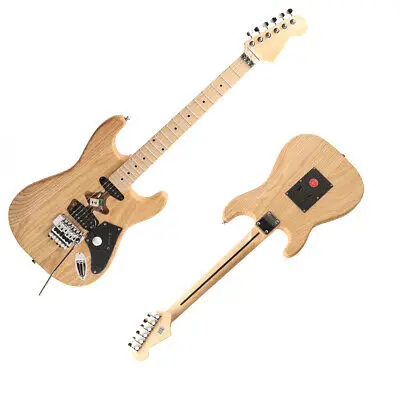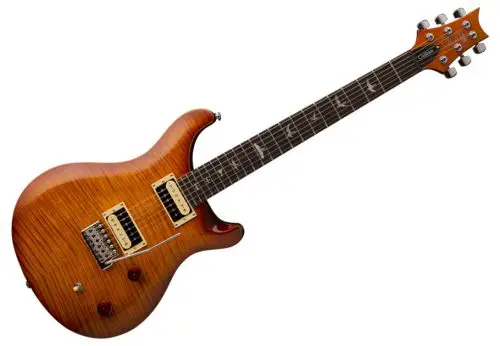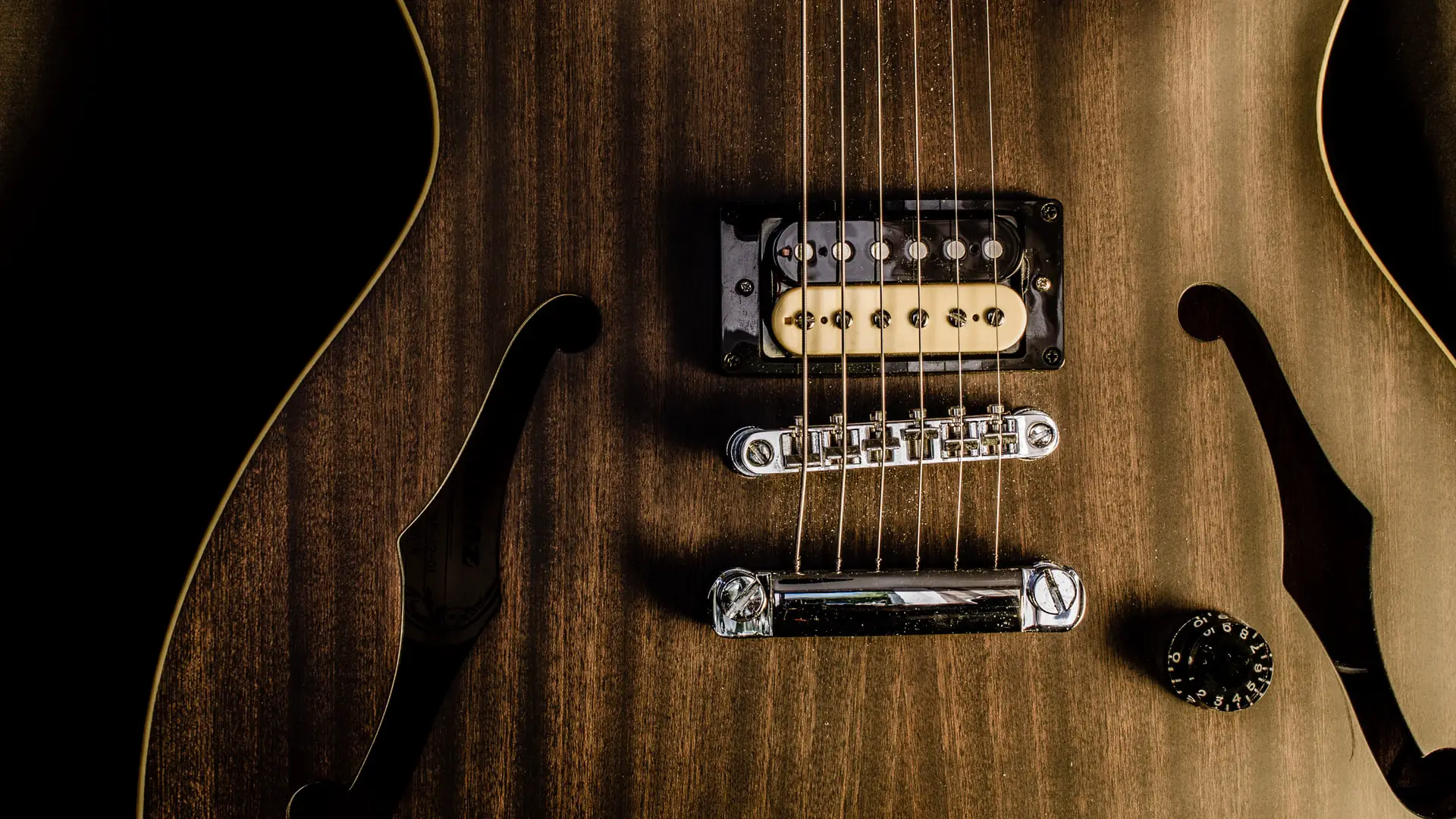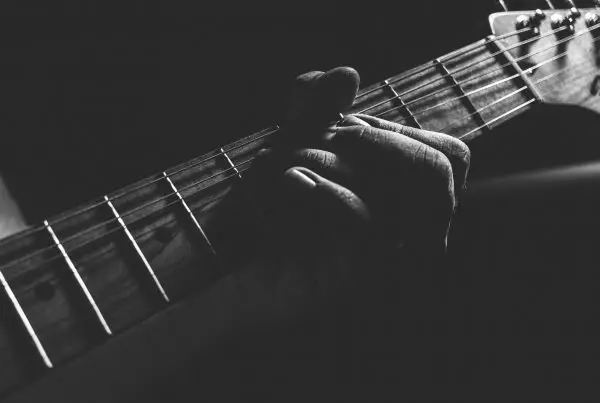Unfinished guitars are those that have not been painted or lacquered. An unfinished guitar is vulnerable to its environment and is more likely to get damaged.
Finishing has multiple functions on a guitar, it provides aesthetic, gives your guitar a nice visual appeal. By stabilising the wood underneath, the finishing can protect the guitar from damage.
Despite all this, some people prefer an unfinished guitar because they care about the originality, in the condition they received them in the first place. For them finishing makes a guitar lose its authenticity.
The best finishing is the one that lets the wood act as if it has not been finished.
As a result, an unfinished instrument will always sound better than a finished one unless the finish is very thin and hard.
Here the question arises, should you get your guitar finished? What happens if you decide to leave it unfinished? Keep reading to find answers to all your questions.
In this article, I will talk about unfinished guitar in detail. Upcoming content:
- What is an unfinished guitar?
- Should I leave it unfinished?
- The pros and cons of leaving your guitar unfinished
- How does finishing affect your guitar?
- How do you unstain your unfinished guitar?
- Is tung oil good for guitars?
- My recommendation
What is an unfinished guitar?
An unfinished guitar is one that has not been coated with any sort of oil, paint, gloss, or lacquer. It is in its most original form, with no editing or modifying. It’s just pure raw wood.
These types of guitars have usually had a little life span as they get damaged easily. Humidity, moisture, dryness, dirt could easily harm such guitars.

Unfinished guitar has a unique look.
Should I leave my guitar unfinished?
It is good to have your guitar finished as it’ll remain more stable and will provide many more years of service compared to a guitar with no finish.
I think that we all can agree that the aesthetics of an instrument are important to most folks and the sole purpose of finishing is to make your guitar look and sound better.
You should definitely get your guitar finished if you want it to have a good visual appeal and protect it.
That said, many folks prefer the look of unfinished guitars. I understand that because I am the same! So let’s discuss the pros and cons next before you make any decision.
Pros Of Unfinished Guitar
1. Finish dampens the guitar resonance
Unfinished guitars sound better. Painted guitars supposedly do not resonate quite as well compared to unfinished guitars, because the layers of paint act as dampers.
If the finish forms a thick layer over the wood, it obstructs the sound waves within the wood. And if the finish forms a soft layer, it becomes an even more effective damper. And with this same logic, a thick and soft finish would be the worst imaginable guitar finish.
I have played around with both finished and unfinished guitars for the sake of sound comparison and there is a noticeable difference.
If you are just coating it with some light oil, the effect on tone is minimal but if you want to protect it from dirt and scrapes, the finish does affect the sound negatively.
2. Unique look
Unfinished guitars look unique. Some people like this while others hate it. It depends entirely on your preference.
I personally like it because it stands out when I bring it to a jam session.
Cons Of Unfinished Guitar
1. Unprotected Wood
The major downfall of wood is that if it absorbs too much moisture it swells and distorts from its shape, and if it’s in a really dry climate; it can become too brittle which will cause it to crack eventually.
Wood is the most important part of the guitar and needs to be taken care of. Most of the guitars make noise through resonance and all of it pretty much comes from the body.
An unfinished guitar may be able to vibrate to its fullest but its lifespan can be affected badly. Thus, it can not survive for long. The amount of moisture that leaves or is absorbed can be taken care of by a good finishing.
2. Easy to get damaged
An unfinished guitar has more chances of getting dirt, sweat, grime, and skin oils getting absorbed into the pores of the wood and once that happens it is nearly impossible to get them out.
3. No aesthetic appeal
Without the gloss or the satin finish, your guitar will not have a fresh look.
An unfinished guitar may sound better but it can only serve you for a year or so. It gets easily dirty and damaged and hence left with no visual appeal.
The overall look may not be the first priority for some of you but your guitar must look aesthetically presentable.
This of course depends on the individuals. Some people like this look while others absolutely hate it.
How does finishing affect your guitar
When you get your guitar finished it affects the durability, maintenance, and appearance of a guitar.
“Finishing” is simply applying some medium such as lacquer, poly, paint on an unfinished guitar, the same as you would finish a piece of furniture.
The finishing stiffens the external fibers of the wood, accentuating the muffle factor and increasing the frequency of resonance with respect to untreated wood.
What really affects the tone of a guitar is the thickness of the material used for the guitar finish, it could be either paint or lacquer. The overall tone depends highly on how well the finish is applied. So you have to be very careful when you decide to apply a finish on your guitar.
This may sound like a risky task if you do not want to ruin your guitar but if done right an expertly applied finish with just the right thinness can make a good guitar sound great.
In other words, the thicker the material you coat your guitar with the more the sound and resonance will be dampened or choked by the finish. Guitars with a satin finish usually have a thinner coating, but
This does not mean that models with a gloss coating will sound terrible. The type of finish you choose does not have that much effect, what really matters is how professionally it has been applied.

Finished guitar improves the durability, maintenance, and appearance of a guitar.
Is tung oil good for finishing?
Tung oil is a great choice if you want a more natural look for your guitar and be able to feel the texture.
However, if you are searching for a relatively low-maintenance finishing option, tung oil may not be right for you. Due to its ability to soak really quickly, you will have to reapply it frequently.
You may even notice spots where it may appear to be rubbing off on a guitar’s body due to your forearm.
It is a traditional component of wood varnishes. Tung oil is a protective finish that cures through the reaction between the oxygen in the air and the large amounts of polyunsaturated fatty acids it contains.
It helps with sealing water or moisture out of wood. However, it is not that widely used for musical instruments because it dampens the vibration of the wood.
Tung oil may bring out the beauty of the wood but it is not solid protection.

Tung oil is a great choice if you want a more natural look for your guitar and be able to feel the texture.
How do you stain your guitar?
Staining your guitar means changing its color and giving it a nice 3D effect. Before applying stain to your guitar, you should raise the grain by wetting it and then sanding it to remove the raised grain.
After doing this you can apply desired coats of the stain on your guitar. You can keep adding coats until it looks the way you want. Following are the materials and steps that you need to follow to stain your guitar.
Required materials for staining guitar:
- Black or dark brown and whatever the primary color is, aniline dye, water-soluble.
- Sandpaper, several grits, from P400 to P1200.
- White, lint-free cotton pads
- Empty bottles to mix the stain
- A couple of wood scraps for testing. (Make sure it’s the same type as the wood used to build your guitar)
Steps to stain guitar:
Step 1: wood preparation
Since maple is not very porous, all you have to do is sand it down. Try to make the surface as flat as possible with the help of sandpaper. Any sand marks left will be visible after the staining.
Step 2: Apply black stain
Black stain is used to make the guitar really pop and give it a 3D look. Before applying it directly to the guitar, mix some dye in 10-20ml of hot water and apply it to the scraps to see how it behaves.
Keep doing it until it is dark enough to be applied to the guitar. Let it dry for 24 hours or so.
Step 3: Sand down the excessive black stain
We used a water-soluble dye, hence the grain has raised unevenly. Guitar surfaces do not have an even density or grained structure.
Once the stain is dried you can clearly see it under the right angle and appropriate light. The surface needs to flatten so the higher parts will be sanded down more as compared to the lower parts. This means that the higher parts will get lighter since more stain has been sanded down.
It is recommended to use fine sandpaper to sand down black until natural maple color appears and the surface is flat.
Step 4: Staining the primary color.
Do the same thing while applying the primary color. Mix it in hot water and then test on it on some scraps. Once you get your desired result, apply it to your guitar. Leave it to dry for 24h or more.
The color may look dull once it’s dried out but don’t worry, the next step will help it pop again.
Step 5: clearing coats
The washboard effect was helpful after the black stain was applied because it helps achieve that cool 3D look. However, making a clear coating is a bit more difficult because it takes a lot more coats to get a flat surface.
Having a couple of coats before black burst is applied is a good idea because it leaves less room for mistakes. There is a thick clear coat between the black paint and wood, so if any burst corrections are required, we won’t ruin the stain.
Step 6: Black Burst
After several clear coats, the surface is nice and flat and ready to be painted black.
Step 7: Clearcoats
Once again to make the guitar look shiny and glossy, apply clear coats.
Step 8: Polishing
Polishing is the process of creating a smooth and shiny surface by rubbing it or by applying a chemical treatment, leaving a clean surface with a significant specular reflection (still limited by the index of refraction of the material according to the Fresnel equations).
In the end, the guitar is polished with very fine sandpaper liquid polish compounds. Guitars are usually polished with two polishes.
One is called cut polish which is used to remove sanding scratches. The other polish is called Fine polish which is used to make it look neat, aesthetically pleasing, nice, and shiny.
Here’s a great video showing how PRS guitars are stained.
Should you stain your guitar?
A finished guitar looks better and it has some practical advantages. The wood of the guitar is basically the essence of the guitar if it is not treated properly. It can respond in ways that are not wanted in an instrument.
It will be a bit more susceptible to moisture and humidity changes and it will get filthy.
Yes, your guitar needs to breathe but in doing so it absorbs a lot of dirt, oil, and grime.
The key here is to find a kind of finish that’ll allow the wood to breathe while minimising the pollutants that get absorbed.
Try to find the most suitable finish for your guitar and get it coated! Do not leave your guitar unprotected.





